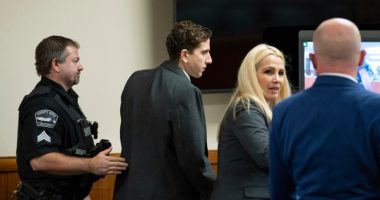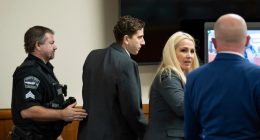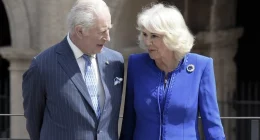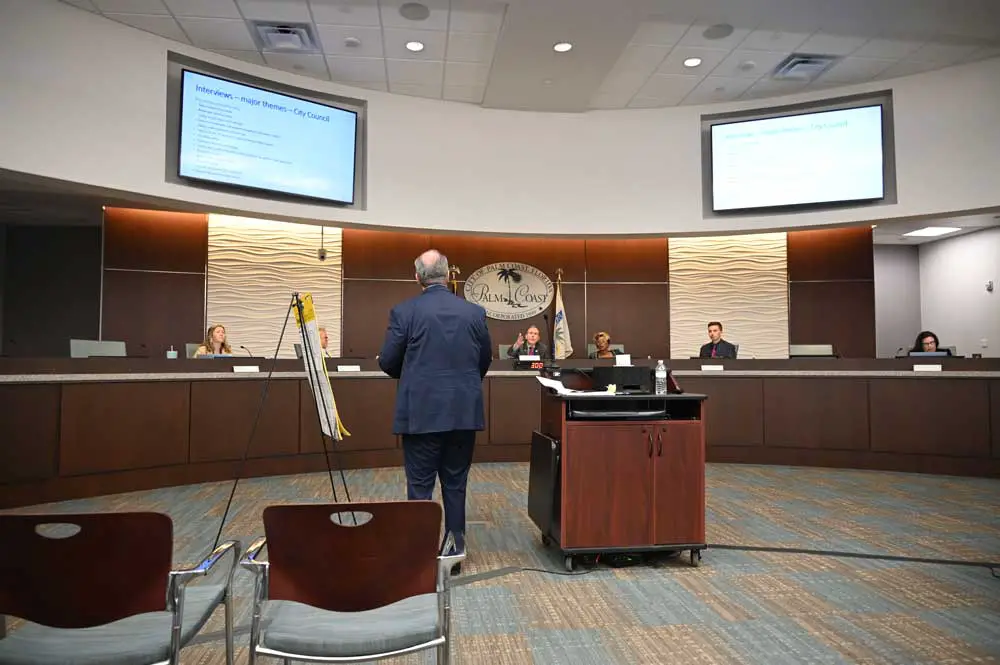
The Palm Coast City Council has narrowed its goals for the coming year to 12. It is an ambitious, immediately contradictory list that starts with limiting government revenue by way of a rolled back tax rate as a goal, then goes on to outline costly initiatives the administration has not been able to address in line with demand for lack of money: road repairs, swale repairs, more money for arts and culture, advancing the dredging of saltwater canals, implementing the parks master plan, and so on.
The council stressed that the goals are not a wish list. Rather, they were distilled from a wish list, albeit a barely longer one (there were 14 goals to start). The goals, which may yet grow, will be set out in the council’s so-called Strategic Action Plan, the annual blueprint that sets out achievement targets and measures progress toward those targets roughly on a quarterly basis. But as it stands, the list is more wishful than realistic, as even a council member alluded.
“We can sit up here all day long and say, well, we want this utopia where we want better roads and better swale maintenance and more potable water,” Council member Theresa Pontieri said. “But at the end of the day, it takes money to do all those things. So we have to find efficiencies. We have to find diversification. We have to figure out how it is that we’re going to give staff the tools for that successful implementation. So I’d ask from my colleagues up here to keep that in mind as we’re driving this policy to not just glaze over what we heard from staff, because I think it’s important when they go to implement, how they realistically feel they’re going to be able to put into play what we decide is a policy.”
Mayor David Alfin thought the money question comes at a later step, but he agreed in the main: “There are hurdles that we may not encounter every day that staff would that would prevent this utopian vision from being executed.”
Pontieri and Alfin were pointing to a underlying tension between the city administration and the council. Such tensions are not unusual in government: administrators are more familiar with the mechanics of running a city, with its day to day needs and vulnerabilities and how now addressing those needs might result in more vulnerabilities in the future, so they push for what they can to fill those needs. But the elected face constituents. They have oversight responsibilities of their own. And they have political realities to contend with. They set their priorities accordingly. So the administration and the elect are not necessarily aligned.
For example last year, the administration argued for an aggressive road-maintenance and resurfacing program to stop city streets from deteriorating. The council approved a limited program instead. Earlier this year, the council rebuffed the administration’s push for higher water and sewer rates, limiting cost increases to the impact fees charged to new development.
“There was a high degree of agreement or alignment between the executive team and the city council,” Joe Saviak, the managing consultant the city hired to shepherd it through the process, said. “You all seem to be on the same sheet of music during these interview questions.” How to get to those mutual goals, however, is the bigger challenge. That’s what the council’s portion of goal-setting is intended to clarify.
Saviak taught in the public administration program at Flagler College and led Sheriff Rick Staly’s leadership office for several years. In late February Saviak held some 17 interviews with council members and administrative directors. He surveyed all city employees, including the council, based on questions elicited by the earlier interviews. Themes emerged within four “pillars of priorities” the council had already selected–a strong and resilient economy, safe and reliable services, a sustainable environment with infrastructure priorities, and civic engagement.
The process included a strength, weakness, opportunity and threat analysis, what is referred to in industry jargon as a SWOT analysis. So the interviews were revealing in those regards. Among the strengths: the staff (an ironic finding, in light of the firing of Denise Bevan, the former city manager, and a concern among staffers that several with lots of experience have been draining away), strong finances, a strong record on public safety and improved relatons with other governments.
Among the weaknesses: as always, too little economic diversity, meaning not enough industry, not enough home-growing jobs (a large portion of the workforce commutes out of county), an infrastructure feeling growth pressures, the swale maintenance program, which tends to draw residents’ complaints for being too slow, and roads that, if not deteriorated, are on the way to deteriorating absent a stronger willingness by the council to spend more money.
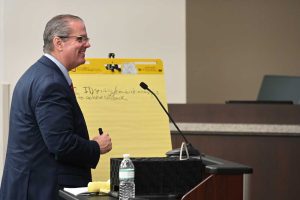
The session Saviak held with the council on Tuesday was intended to narrow down the goals to a feasible list the administration can enact. It started with Council member Ed Danko pushing for a rolled-back rate this year, as was done last year. That triggered a brief but pointed debate among council members, revealing less cohesion on the proposal than may have been the case last year, until Saviak and Mayor David Alfin deftly sidestepped the heart of the proposal by making a rolled-back rate more aspirational than mandatory. “The goal I’m suggesting is that we work towards a full millage rate rollback,” Danko said. (See: “With One Exception, Palm Coast Council is Not As Eager for Repeat of Rolled Back Tax Rate This Year.”)
That put the most contentious proposal out of the way, leaving the council members to roam over their other objectives more collegially.
Those can be summed up this way:
Council member Nick Klufas is pushing for an audit of the city’s capacity to convert to solar energy. Doing so, in his view, would yield additional dollars that could be spent on the city’s arts district in Town Center, for example. (It’s notable, and not a small matter, that when he first ran for the council in 2016, one of Klufas’s leading proposals was to turn the city’s Fibernet broadband system into a money-maker. “FiberNET represents a unique opportunity for Palm Coast to create a profitable municipal utility,” he said at the time, using language almost identical to the language he is now using about solar. Fibernet never turned into a money-maker.)
The council favors a citywide plan for road repairs, though the administration already submitted that last year. It favors a plan for swale maintenance (swale maintenance is paid for out of the stormwater fund, not the general fund. Property taxes go into the general fund. The stormwater fund is financed through fees on residents’ utility bills.) The council, as it reasserted last week, wants the saltwater dredging initiative to remain a priority, though to date it knows more about the significant costs of dredging than about how to pay for any of it. (See: “Should Palm Coast’s Saltwater Residents Pay Special Tax for Dredging? Survey Will Ask.”
Internally, the council has three objectives–improve citizen engagement with the city through more timely customer service, develop a technology-focused capital improvement plan for the administration, and put more emphasis on economic development efforts with higher-paying jobs in view. That’s been every local government’s goal for at least a generation. None has cracked that nut. “If that means incentives, if that means certain different tax breaks, whatever it means, in order to make that happen,” Pontieri said, “we have to understand that there’s got to be dedicated funding for that as well.”
The council is also keep on implementing its recently unveiled parks master plan–by developing an implementation plan. As with the economic development objective, all the other objectives would cost money.
Externally, the city wants to improve what access residents have to public transportation, which would be feasible only in a partnership with county government. The county does provide those services on a per-ride, point-to-point basis, which requires reservations.
The council wants to conduct an analysis of its current housing stock and study how to improve options for affordable housing and senior citizens. It may consider doing so through policy. “We can’t dictate to property owners, you must build apartments, you must build this,” Dank said. “I think we have to find incentives or encouragement along the way.”
Finally, the council wants to identify a steady funding source for the arts district it established in 2020 in Town center. The district has languished as little more than a designation since. If anything, it lost its anchor when the Palm Coast Arts Foundation dissolved. (See: “Palm Coast Will Establish an Arts District in Town Center as New Spur for Commerce of Culture.”)
The city will be getting back its citizens survey on May 10. Only then will the list of objectives will be refined with the survey results in mind. Meanwhile, Alfin said, “having this realistic dialogue is incredibly energizing for this process.” The next goal-setting session is tentatively scheduled for May 28.
![]()
palm-coast-goals-2024




